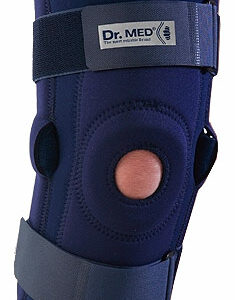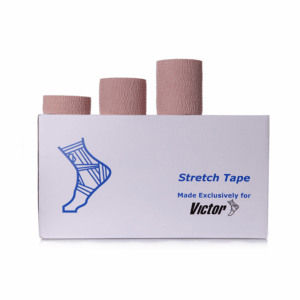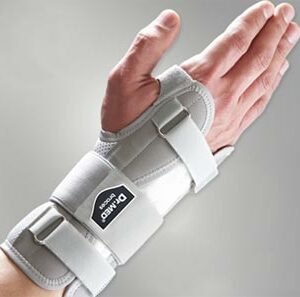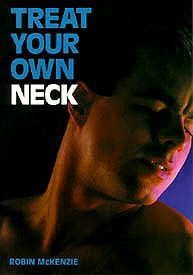Snowboarding Injuries
Updated:
Most snowboarding injuries occur traumatically, usually from a fall or due to a collision with another snowboarder or stationary object. In snowboarding, because both feet are strapped in, there tends to be less traumatic knee injuries than skiing (which involves greater twisting of the knees) and a significantly greater percentage of upper body injuries. Traumatic snowboarding injuries often occur when a snowboarder falls forwards or backwards onto their wrists and hands or backside, or, from other traumatic incidents involving collisions or falls onto the shoulders, elbows, head or neck. These injuries can include fractures or contusions, joint sprains or dislocations, ligament sprains or concussion with some conditions being quite serious.
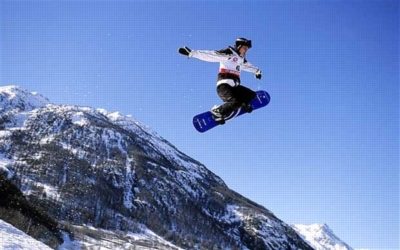
Most Common Snowboarding Injuries
Wrist & Hand
Sprained Wrist
Tearing of connective tissue and / or ligaments of the wrist joint typically as a result of a fall onto an outstretched hand causing the wrist to stretch excessively. Associated with pain in the wrist that may increase when firmly touching the affected region of the wrist joint, restricted wrist joint mobility and often swelling. Pain may worsen when performing gripping activities or upon weight bearing through the affected wrist (such as pushing off the chair lift).

Members Only ContentBecome a PhysioAdvisor Member to gain full access to this exclusive content. For more details see Become a Member. Already a member? Login Now
Elbow & Forearm

Members Only ContentBecome a PhysioAdvisor Member to gain full access to this exclusive content. For more details see Become a Member. Already a member? Login Now
Shoulder
AC Joint Sprain
Tearing of the connective tissue and ligaments of the Acromio-Clavicular joint (AC Joint – figures 3 & 4) typically as a result of a direct impact to the point of the shoulder during a fall or a collision. Causes pain at the top of the shoulder that may increase when lying on the affected side, moving the arm across the body and during certain other shoulder movements. There is also localised tenderness on firmly touching the AC joint (figures 3 & 4) and sometimes a noticeable step deformity.
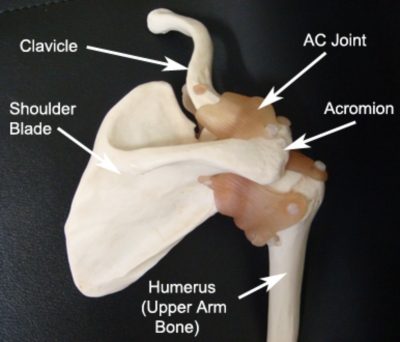
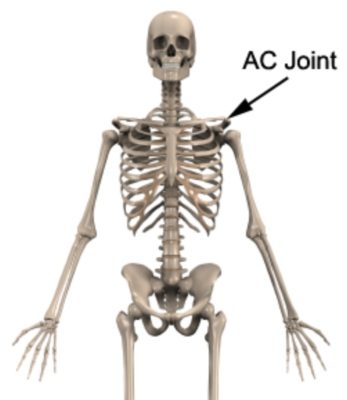

Members Only ContentBecome a PhysioAdvisor Member to gain full access to this exclusive content. For more details see Become a Member. Already a member? Login Now
Head & Neck
Cervical Disc Bulge
Tearing of connective tissue surrounding a disc in the neck with subsequent bulging of disc material (figure 8). Typically as a result of a fall onto the head or neck (often with the head in a bent or twisted position). May cause neck pain centrally or on one or both sides of the neck, with or without symptoms radiating into the upper back, shoulder, upper arm, elbow, forearm, wrist or hand or headache. Pain may increase on firmly touching the affected level of the spine and there is often associated muscle spasm and restriction of spinal movement. Occasionally there may be no neck pain, with only symptoms down the affected arm or only headache. Pins and needles or numbness are occasionally present in the affected arm or hand. Symptoms often increase during with repetitive or prolonged slouching, bending forwards of the neck, shoulders forwards movements, lifting, sneezing, neck rotation or side bending movements and are often worse first thing in the morning.
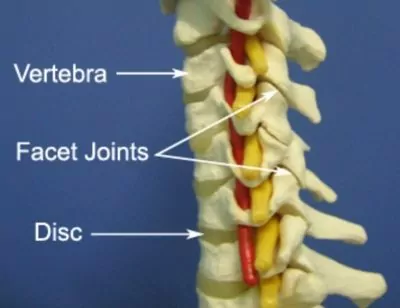

Members Only ContentBecome a PhysioAdvisor Member to gain full access to this exclusive content. For more details see Become a Member. Already a member? Login Now
Knee
ACL Tear
Tearing of the anterior cruciate ligament of the knee (ACL – Figure 9) typically following landing from a jump, or due to a fall or collision involving a hyperextension, sideways or twisting force to the knee. Often associated with a ‘snap’, ‘pop’ or ‘tearing’ sensation or a feeling of ‘something going out and then going back’ at the time of injury. Usually associated with severe pain at the time of injury, significant swelling within a few hours of injury and a feeling of knee instability or giving way of the knee during certain movements.
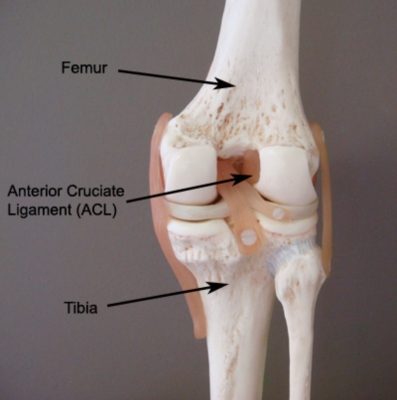

Members Only ContentBecome a PhysioAdvisor Member to gain full access to this exclusive content. For more details see Become a Member. Already a member? Login Now
Ankle
Snowboarder’s Ankle (Osteochondral Lesion of the Talar Dome)
Damage to cartilage or bone located at the top of the talus bone (figure 13), usually due to compressive forces such as landing from a jump, a collision or fall. In non-snowboarding injuries they often occur in association with a rolled ankle. Symptoms may increase when landing from a jump, during weight bearing activities, such as excessive walking or running (especially up hills or on uneven surfaces) or during hopping, jumping or twisting. Pain may also increase on firmly touching the region of the talus bone, often at the front of the ankle (figure 14).
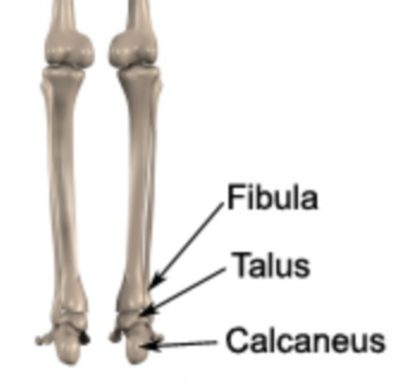
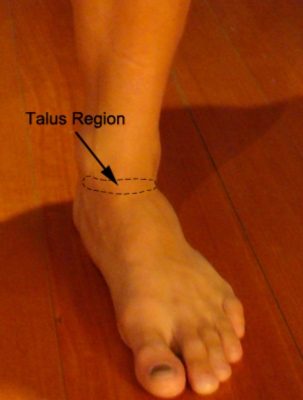
Lower Back

Members Only ContentBecome a PhysioAdvisor Member to gain full access to this exclusive content. For more details see Become a Member. Already a member? Login Now
Sacroiliac Joint Sprain
Damage to connective tissue of the sacroiliac joint, often as a result of a forceful fall or repetitive falls onto the tail bone whilst snowboarding. Causes one sided lower back pain below the upper aspect of the pelvis. Pain may radiate into the buttock and occasionally, the groin or outer aspect of the front of the thigh. Pain often increases on firmly touching the affected joint (figure 16).
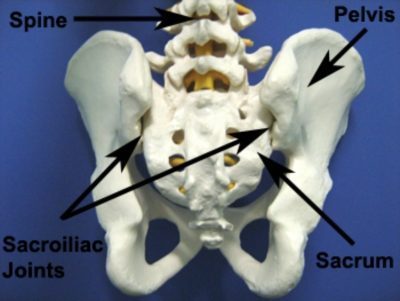
Bruised Sacrum or Coccyx
Bruising to the tail bone (sacrum or coccyx) often as a result of a forceful fall or repetitive falls onto the tail bone whilst snowboarding. Usually causes pain at the bottom of the spine (tail bone) which may be sore to touch and increases when sitting down.
 Contributing Factors to Snowboarding Injuries
Contributing Factors to Snowboarding Injuries
A number of factors may contribute to the incidence or development of snowboarding injuries, including:
- Inexperience
- Inappropriate warm up or cool down
- A lack of fitness or conditioning
- Muscle weakness (particularly the gluteals, hamstrings, quadriceps, lower leg muscles and core stabilisers)
- Excessive training
- Poor technique
- Inadequate recovery between sessions
- Poor flexibility (particularly in the quadriceps, hamstrings and gluteals)
- Tightness in specific joints
- Poor posture
- Poor core stability
- Fatigue
- Dehydration or poor nutrition
- A lack of concentration
- Unsafe riding
- Excessive speed

Members Only ContentBecome a PhysioAdvisor Member to gain full access to this exclusive content. For more details see Become a Member. Already a member? Login Now
 Injury Prevention Tips for Snowboarding Injuries
Injury Prevention Tips for Snowboarding Injuries
- Warm Up & Cool Down properly
- Make sure you are ‘Fit to Snowboard’ (check out our Core, Gluteal, Hamstring, Quads & Balance Exercises)
- Maintain a healthy body weight to minimise the load on your knees
- Take a lesson to improve your technique
- Snowboard to your own ability level and on appropriate terrain for your level of experience
- Snowboard appropriately to the conditions

Members Only ContentBecome a PhysioAdvisor Member to gain full access to this exclusive content. For more details see Become a Member. Already a member? Login Now
 Physiotherapy Products for Snowboarding Injuries
Physiotherapy Products for Snowboarding Injuries
The following physiotherapy products are commonly prescribed to patients by physiotherapists to assist in the rehabilitation and prevention of snowboarding injuries:
To purchase physiotherapy products to assist with snowboarding injuries click on one of the above links or visit the PhysioAdvisor Shop.
 Find a Physio
Find a Physio
Find a physiotherapist in your local area who can treat snowboarding injuries.

Link to this Page
If you would like to link to this article on your website, simply copy the code below and add it to your page:
<a href="https://physioadvisor.com.au/injury-diagnosis/sports-injuries/snowboarding-injuries”>Snowboarding Injuries – PhysioAdvisor.com</a><br/>PhysioAdvisor provides detailed physiotherapy information on snowboarding injuries including most common snowboarding injuries, contributing factors and injury prevention tips.
Return to the top of Snowboarding Injuries.

